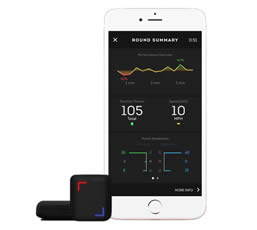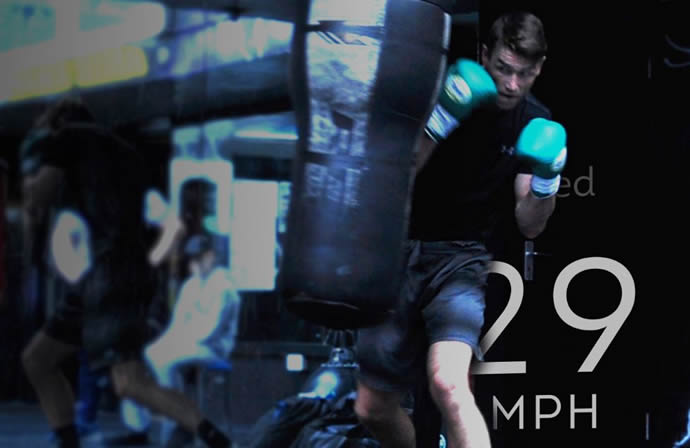Technology is proving integral to sporting success
Using the latest cutting edge technology in elite sports is something that has been well documented, and here at Electronic Specifier we have covered a variety of stories from an early warning system used in rugby to assist in detecting and avoiding concussions to football coaches using drones to give them an alternative view of training sessions.
However, popular sports like rugby and football are not the sole domain of state-of-the-art technology innovations. Electronic Specifier editor Joe Bush investigates.
Anyone familiar with the Rocky movies will remember the scenes where the eponymous hero chases chickens and pounds raw meat as part of his rigorous training regime. Despite the fact that technology is playing an increasingly integral role in elite sport, these basic, almost primal training methods are what most people still envisage when thinking of boxing training – the reality is somewhat different.
Boxing is actually no stranger to using cutting edge technology to get fighters to the top of their profession. Callum Smith (pictured below), winner of Commonwealth, British and European titles, is tipped for greatness in the super middleweight division, but the methods used to plan his route to the top is about as far removed from downing half-a-dozen raw eggs and running through the snow as you can get.
Training out of Joe Gallagher’s elite gym in Manchester, Smith is using the CORNER from Atheltec (right), a pair of small wireless trackers that tuck into Smith’s hand wraps and records statistics from training sessions via a smartphone.
Speaking to Boxing News, Smith said: “It’s good. I think Joe will be a big fan of it. We do sessions where he counts your punches and it [CORNER] can’t really lie. It’s there in black and white. It's good to see what your work-rate’s like at the start of camp to the end of camp.
“The trainer can see whether his boxer’s working and he can show it to his fighter so there’s proof if you’re not working hard enough, or you were working harder last week than you are this week. It’s good for the boxers to see that. It’s good mentally to know you are improving and you are getting fitter. Although you feel it, it’s good to see it.
"It doesn’t just show you how many punches you’re throwing, it shows you what you’re throwing - jabs, right hands or your combination punches - and it shows you what part of the round you’re working and what part you’re not. I do think it’s a very good tool and I would like to keep using it.”
New balls please
The sport of Tennis, particularly in the UK, has a reputation of being immensely traditional – with time honoured conventions that need to be respected and upheld. You wouldn’t imagine, for example, the All England Lawn Tennis and Croquet Club (the location for the annual Wimbledon Championships and the only Grand Slam tournament where the players still have to wear white) being that open or susceptible to change.
However, that could be about to change as Virgin Active has introduced a drone that, the company hopes, can revolutionise the methods of tennis training. The Drone-ovic (pictured below), named in honour of world number one Novak Djokovic, is capable of dropping balls from all angles and heights which are not achievable using a conventional ball machine – recreating the smash and serve shots with greater accuracy.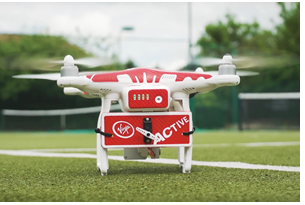
Fitted with tiny cameras the drone can also give coaches a bird’s eye view of a player’s game so they can analyse technical aspects of their performance from a viewpoint not previously possible.
"At Virgin Active we like to be at the forefront of innovation and we are constantly asking ourselves what's next?” said Gary Stewart, Head of Racquets at Virgin Active. “We have had lots of feedback from our racquet members looking to improve their serves and smash game which led us to explore how we could take their training to new heights.”
Autonomous driving in the pool
For obvious reasons, swimming might not be the first sport you think of when dealing with integrated technology as hi-tech electronics and water don’t tend to mix. Indeed, in previous years, when technology has lent a helping hand in the pool, it’s quickly fallen foul of the authorities.
At the 2008 Summer Olympics, 98% of all medals were won by swimmers wearing Speedo’s LZR Racer swimsuit. In addition, 23 of 25 world records were broken by athletes wearing the swimsuit. The swimsuit, while leaving the arms uncovered, covers the rest of the swimmer’s body to just above their ankles.
Due to the sudden surge in swimming records being broken, the International Swimming Federation (FINA) declared in 2009 that ‘men’s swimsuits shall not extend above the navel or below the knee. Women’s swimsuits shall not cover the neck or extend past the shoulders, or below the knee, for swimming competitions.’ This inevitably led to the modification of the design of the swimsuit.
However, an intriguing partnership has seen this year’s Rio Olympics hopefuls and a major player in the automotive market, team-up to go for gold. BMW has created a customised motion tracking system for USA Swimming, practically treating the athletes like autonomous cars. BMW’s new ‘taillight’ solution sees LEDs used as illuminated markers on swimmers’ bodies in the same way as they are on the company’s cars.
Mounted onto the wrists, shoulders, hips, knees, ankles and toes, the LEDs interface with an underwater camera and motion tracking technology. This then enables coaches to analyse the biomechanics and technique of the swimmers – pinpointing limb and joint angles.
At the heart of the BMW’s motion tracking system for USA Swimming is two algorithms designed to detect and adaptively track a swimmer’s motion. One of them, computer vision, is used in the automaker’s cars to identify humans, park distance, lane deviation and active cruise control.
The motion tracking system is one of four technology projects that BMW has produced under its sponsorship as the US Olympic Committee’s official mobility partner. The other three include a velocity measurement system for long jumpers, a two-man bobsled and a carbon fibre racing wheelchair for the US Paralympics Track and Field Team.
On a similar theme Israeli sports-tech company, Motionize, is working with the US rowing team, providing the company’s sports tracking products to improve its performance ahead of the Rio games. Founded in 2011, Motionize uses two independent sensors to give paddlers a complete picture of their movements and instant feedback.
“Up until now a coach can only look at one side at a time. To see what you are doing from all points of view in real time has really helped me tweak,” Team USA kayaker Maggie Hogan (pictured below) told Sports Illustrated about why she uses Motionize to train.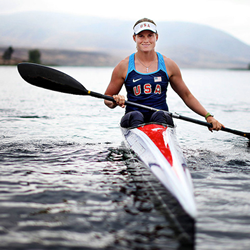
Fears over the Zika virus at the Rio games has been well documented, with several high profile golf names, including Jordan Speith and Rory McIlroy pulling out of the event. However, athletes competing in open water events are particularly at risk, with water quality in the Guanabara Bay and the Rodrigo de Freitas Lagoon at reportedly dangerous levels. In addition, concerns haven’t been eased by a recent oil slick at the sailing venue.
However, to combat the threat the US rowing team will be wearing special antimicrobial wetsuits to protect them from the potentially dangerous water. Engineers at Philadelphia University created the technology behind the textile that is used to make the suits, which have two layers - one that protects from water and another that contains chemicals that defend from microbes and viruses.
Not just pedal power
Great Britain’s 65 medals (29 of them gold) at the London games of 2012 was their best medal haul since the first London games in 1908. That success was due in no small part to Team GB’s cycling team. Victoria Pendleton, Chris Hoy, Laura Trott and co roared home with 12 medals, eight of them gold – topping the cycling medal table by some distance from second placed Germany.
With Chris Froome’s continued dominance in the Tour de France it’s clear that Team GB can be confident of great things in Rio later this year. However, nothing is being taken for granted and no stone will be left unturned in the pursuit of perfection.
British Cycling has worked closely with BAE Systems to develop an advanced ergometer that measures the power output of elite cyclists. The system measures work-rate and energy expended and is capable of replicating the inertial forces of a velodrome more accurately. The data collected includes gas and blood analysis and enables testing at high speeds to analyse the athlete’s technique.
The ergometer was developed as part of a technology partnership between BAE Systems and UK Sport, and following a request from British Cycling for an adaptable system that could be customised for individual cyclists. The system was also designed to be easily portable which means it can be used in a laboratory ensuring the data captured is more accurate.
Paul Barratt, Lead Biomechanist for GB Cycling, English Institute of Sport, commented: “Every performance on the world stage requires elite athletes to be at their best. Highly accurate testing tools such as the cycling ergometer help to ensure athletes are performing at their most competitive. BAE Systems has created a portable and accurate system that we believe will be integral to the teams’ training regimes and will help us to achieve our medal winning target at the Rio games.”
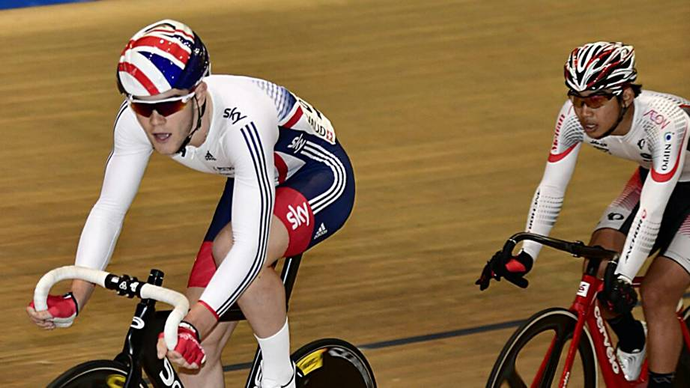
With an appearance similar to a normal ergometer or static exercise bike, the advanced cycling ergometer houses a large variable fly wheel at its rear – with blades that can be adjusted to increase or decrease resistance on the pedals, mimic different gear ratios with accuracy and generate forces for the cyclist based on their individual load and the track on which they are cycling.
Henry White, BAE Systems’ UK Sport Technology Partnership Lead said: “We take great pride in supporting UK Sport and apply the same problem solving principles and ingenuity to challenges in sport as we do to tackling complex defence and security programmes. The cycling ergometer is a unique system which we hope will boost the success of the British Cycling team and is one of a number of projects on which we are working this year with UK Sport.”
VR advantage
Another of these projects include the development of digital headset technology which is being used to integrate 3D video in new ways, providing real benefits in a range of sports including sailing, canoeing, triathlon and winter sports such as bobsled, skeleton and skiing.
The project, named VR-Vantage (pictured top), provides a playback of 3D recorded material collated by engineers and trainers ahead of competition. The video playback can be viewed on smartphones as well as the latest headsets, giving athletes a fully immersive experience and allowing them to feel familiar in the environments in which they’ll be competing, as well as understanding the undulations, twists and turns of a course layout ahead of competition.
Simon Timson, Director of Performance, UK Sport commented: “Familiarity and practice in the competition environment, whether real or virtual, breeds confidence in athletes. The advantages of virtual training should not be underestimated in pursuit of excellence. This adaptation of new technology allows us to digitally bottle that experience for elite athletes and help them perform at their best. Every extra benefit we can offer our athletes ahead of elite competition is significant, so this innovative application of 3D video and virtual reality technology should provide an advantage in helping athletes familiarise themselves with new courses.”
White continued: “VR-Vantage adapts existing technology in a short time frame, and can be integrated into athletes’ training schedules quickly and seamlessly. Technologies that BAE Systems are developing for aircraft inspection and operator training have been utilised in an affordable manner, allowing roll-out across a large number of sports.”
Optical sensor technology from BAE Systems is also being used by GB Cycling’s BMX team. Originally developed for the ‘sense and avoidance’ systems on unmanned aircraft, the sensors interact with miniature LEDs fixed to the BMX to track the trajectory of the riders while on the ground and, critically, in the air. This information is then relayed to an app, giving riders and coaches a real time read-out of performance.
Speaking at the Great Britain Cycling Team’s BMX training session, British BMX rider Liam Phillips said: “In an elite sport such as BMX, where riders are travelling around 40kph and spending more than 40% of the race in the air, every milliseconds counts and one imperfection for your form can put you at a disadvantage. This new technology from BAE Systems will revolutionise the way we train, allowing us to analyse our techniques with a new-found precision and helping us shave off those valuable fractions of a second.”
Timson added: “Medals will be hard won in Rio, but access to BAE Systems’ expertise, where their forward thinking engineers are applying cutting edge technology to improve our athletes’ training and performance, will prove invaluable. The UK’s athletes and their coaches are working hard to make the nation proud in Rio, as they did in London, and it’s fantastic to have the best of British engineering, thanks to BAE Systems, backing them all the way.”
Paralympics
Team GB were equally successful in the 2012 Paralympics, winning 120 medals, 34 of them gold – and technology is playing its part in the target of repeating that success in Brazil. At this year’s Farnborough International Airshow BAE Systems showcased a device known at the WATT System (Wheelchair Athlete Test and Training System) which allows wheelchair racers to replicate any training sessions they would receive outdoors, just as effectively indoors – meaning that training quality and schedules and never compromised by the weather.
Created using CAD, the system consists of an adjustable frame that holds the athlete’s chair in place, and two electric motor brakes – adapted from the Tacx virtual reality bike trainer – that rest against the rear wheels. The WATT System’s motor brakes can create differing levels of resistance on the wheels – helping to accurately simulate different road and course environments.
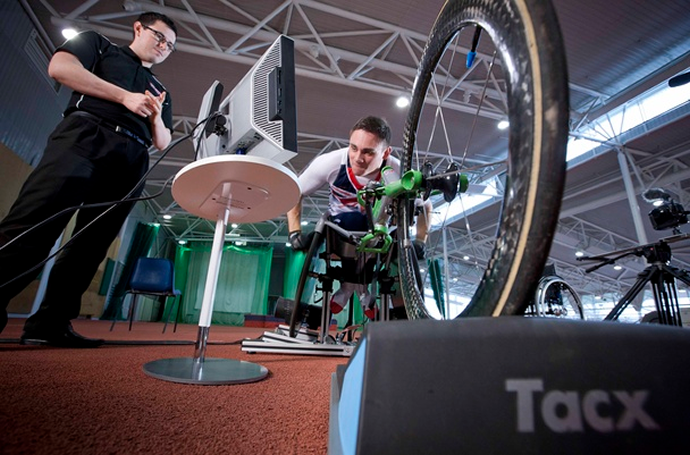
The built-in bespoke software allows athletes to simulate courses from anywhere in the world, and via the accompanying screen, they can visualise the road ahead, with the motor brakes offering a varied workout for athletes.
In future, this technology could also be augmented by adding in VR technology, to create a truly immersive training experience. This would allow athletes to use the system to both familiarise themselves with competition areas they will be facing ahead of time.
In addition, the WATT System allows athletes to record their performance, measure improvements over time and compare their race times to those of other athletes via online leaderboards – even letting them predict their performance over a course to be race in the future. The screen can also be used to display workout data via BAE Systems’ own bespoke software, showing the speed of the athletes as well as the level of power pushing down on the wheels – helping athletes to refine their pushing techniques.

